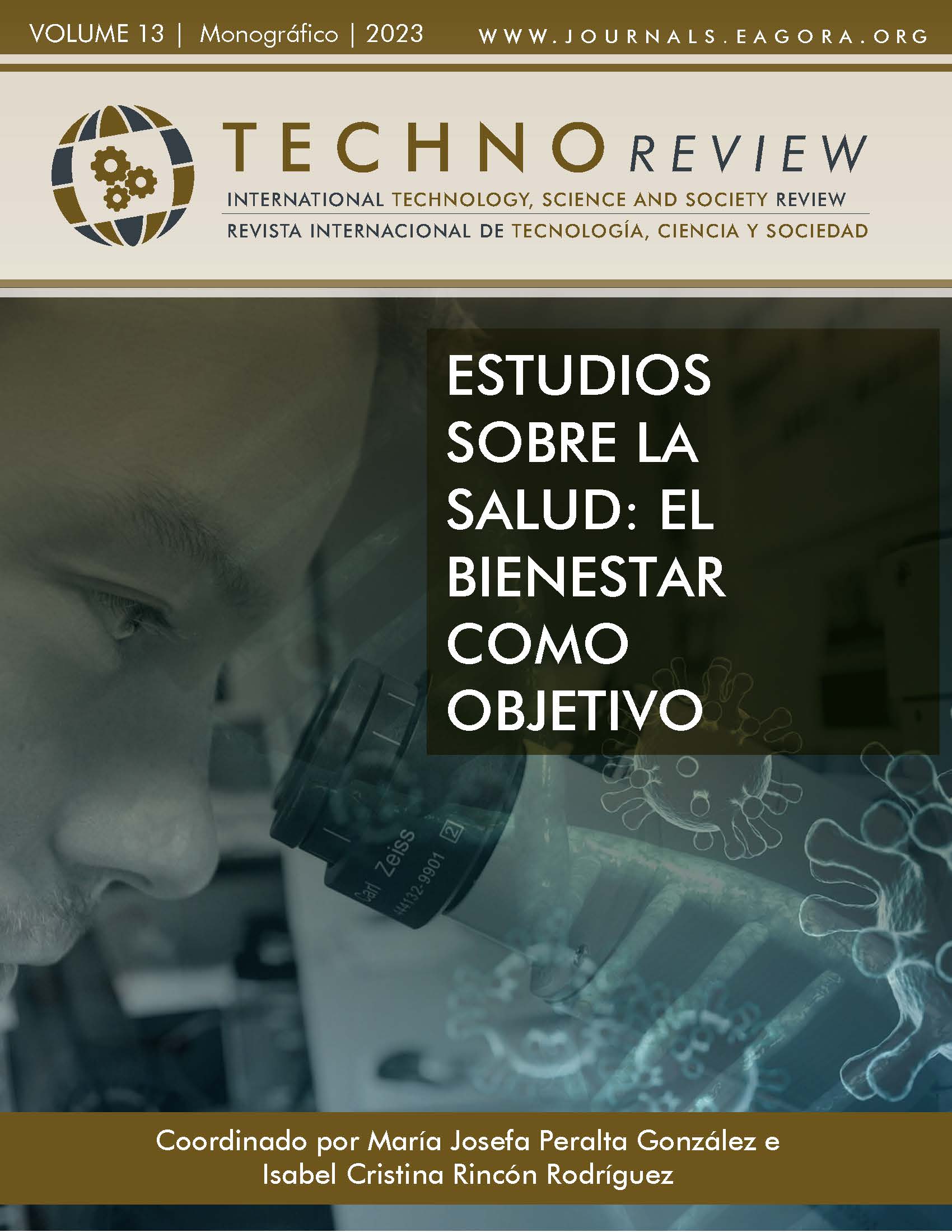The future of human reproduction
Ectogenesis and transhumanism?
DOI:
https://doi.org/10.37467/revtechno.v13.4796Keywords:
Ectogenesis, Transhumanism, Posthumanism, Postgenderism, Artificial womb, Techno-optimism, Techno-pessimismAbstract
This paper proposes that ectogenesis is a form of transhuman reproduction. Some of the advantages that have been found if ectogenesis is developed are mentioned, such as the liberation of women by freeing them from pregnancy, but they are accompanied by some criticism. From a case it is stated that there are problems that could arise from the development of ectogenesis that have not even been considered in the literature. Finally, it is proposed that perpetuating sexual dimorphism leads to perpetuating gender differences, so that the theoretical solution would be to eliminate sex in order to eliminate gender.
References
Bostrom, N. (2005). A history of transhumanist thought. Journal of Evolution and Technology, 14, 1-25. https://jetpress.org/volume14/bostrom.pdf
De Bie, F. R., Kim, S. D., Bose, S. K., Nathanson, P., Partridge, E. A., Flake, A. W., & Feudtner, C. (2022). Ethics considerations regarding artificial womb technology for the fetonate. The American journal of bioethics: AJOB, 1–12. Advance online publication. https://doi.org/10.1080/15265161.2022.2048738
Diéguez, A. (2020). La función ideológica del transhumanismo y algunos de sus presupuestos. Isegoría, 63, 367–386. https://doi.org/10.3989/isegoria.2020.063.05
Eichinger, J., & Eichinger, T. (2020). Procreation machines: Ectogenesis as reproductive enhancement, proper medicine or a step towards posthumanism?. Bioethics, 34(4), 385–391. https://doi.org/10.1111/bioe.12708
Ferreira, M. A. S. (2017). The fantasy of ectogenesis in Interwar Britain: Texts and contexts. En: M. Lemos & M. Ramalhete Gomes (eds.), Exchanges between Literature and Science from the 1800s to the 2000s: Converging Realms, 136-154. Cambridge Scholars Publishing.
Firchow, P. Science and Conscience in Huxley’s “Brave New World”. (1975). Contemporary Literature, 16(3), 301-316.
Fraser, M. (1994). Stephane Tarnier and the origin of incubators for premature babies. Report of proceedings. Scottish Society of the History of Medicine, 1–2
Fusco, V., & Broncano, F. (2020). Transhumanismo y posthumanismo. Isegoría, 63, 283–288. http://isegoria.revistas.csic.es/index.php/isegoria/article/view/1099
Haldane, C. (1932). Brave New World: a Novel. Nature 129, 597-598. https://doi.org/10.1038/129597b0
Haldane, J. B. S. (1924). Daedalus or Science and the Future. A paper read to the Heretics. Cambridge, on February 4th, 1923. Kegan Paul and Co.
Hastings Center. (1996). The goals of medicine. Setting new priorities. The Hastings Center report, 26(6), S1–S27. https://doi.org/10.2307/3528765
Hazlett, A., Molden, D. C., Sackett, A. M. (2011). Hoping for the best of preparing for the worst: Regulatory focus and preferences for optimism and pessimism in predicting personal outcomes. Social Cognition, 29(1): 74-96.
Hjorleifsson, S., Árnason V., & Schei, E. (2008). Decoding the genetics debate: Hype and hope in Icelandic news media in 2000 and 2004. New Genetics and Society, 27(4):377-394. https://doi.org/10.1080/14636770802485467
Hochschild, J., Crabill, A., & Sen, M. (2012). Technology optimism or pessimism: How trust in science shapes policy attitudes toward genomic science . Issues in Technology Innovation, 21, 1-16.
Hughes J. J. (2008). Back to the future. Contemporary biopolitics in 1920s’ British futurism. EMBO reports, 9 Suppl 1(Suppl 1), S59–S63. https://doi.org/10.1038/embor.2008.68
Huxley, J. (1957). Transhumanism. En: New Bottles for New Wine. Chatto & Windus.
Karp L. E. (1978). Novel mechanisms of reproduction: preimplantational ectogenesis. Postgraduate medicine, 64(4), 77–80. https://doi.org/10.1080/00325481.1978.11714946
Karp, L. E., & Donahue, R. P. (1976). Preimplantational ectogenesis. Science and speculation concerning in vitro fertilization and related procedures. The Western journal of medicine, 124(4), 282–298.
Kass L. R. (1971). Babies by means of in vitro fertilization: unethical experiments on the unborn?. The New England journal of medicine, 285(21), 1174–1179. https://doi.org/10.1056/NEJM197111182852105
Llano Alonso, F. H. (2018). Homo excelsior. Los límites ético-jurídicos del transhumanismo. Tirant Lo Blanch.
Nicol, C. (2007). Brave New World at 75. New Atlantis, 16, 41-54.
Resta, R. G. (2017). In Memoriam: Laurence E. Karp (1939-2016). American journal of medical genetics. Part A, 173(4), 1007–1008. https://doi.org/10.1002/ajmg.a.38133
s/a. (1897). The use of incubators for infants. The Lancet, 149(3848), 1451-1524.
s/a. (1898). The danger of making a public show of incubators for babies. The Lancet, 151(3884), 390-391. https://doi.org/10.1016/S0140-6736(01)98352-7
Saborido, C. (2020). Filosofía de la medicina. Tecnos.
Segers, S. (2021). The path toward ectogenesis: looking beyond the technical challenges. BMC medical ethics, 22(1), 59. https://doi.org/10.1186/s12910-021-00630-6
Silverman, W. A. (1979). Incubator-baby side shows (Dr. Martin A. Couney). Pediatrics, 64(2), 127–141.
Slovic, P. (1987). Perception of risk. Science (New York, N.Y.), 236(4799), 280–285. https://doi.org/10.1126/science.3563507
Sparrow R. (2010). Should human beings have sex? Sexual dimorphism and human enhancement. The American journal of bioethics: AJOB, 10(7), 3–12. https://doi.org/10.1080/15265161.2010.489409
Steptoe, P. C., & Edwards, R. G. (1978). Birth after the reimplantation of a human embryo. Lancet (London, England), 2(8085), 366. https://doi.org/10.1016/s0140-6736(78)92957-4
Tetlock, P. (2005). Expert political judgment: How good is it? How can we know? Princeton University Press.
Wolff, F. (2019). Tres utopías contemporáneas. Hacia la unidad política de la humanidad. Erasmus.
Zósimo buscando conocimiento. (2020). La ectogénesis - los vientres artificiales. [Video]. Youtube. https://www.youtube.com/watch?v=stc9BHNG1QQ&t=70s
Downloads
Published
How to Cite
Issue
Section
License
Those authors who publish in this journal accept the following terms:
- Authors will keep the moral right of the work and they will transfer the commercial rights.
- After 1 year from publication, the work shall thereafter be open access online on our website, but will retain copyright.
- In the event that the authors wish to assign an Creative Commons (CC) license, they may request it by writing to publishing@eagora.org







